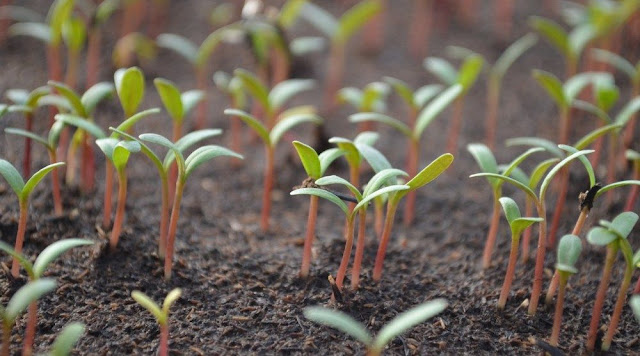According to the
theories of science, there was a time when there were no plants on earth. Then,
hundreds of millions of years ago, tiny specks of protoplasm appeared on the
earth. Protoplasm is the name for the living material that is found in both
plants and animals. These original specks of protoplasm, according to this
theory, were the beginnings of all our plants and animals.
The protoplasm
specks that became plants developed thick walls and settled down to staying in
one place. They also developed a kind of green coloring matter known as “chlorophyll”.
This enabled them to make food from substances in the air, water and soil.
These early green plants had only one cell, but they later formed groups of
cells.
Since they had no
protection against drying out, they had to stay in the water. Today, some
descendants of these original plants still survive, though they have changed
quite a bit. We call them “algae”. One group of plants developed that obtained
their food without the use of chlorophyll. These non-green plants are the “fungi”.
Most of the plants
on earth today evolved from the algae. Some of them came out of the sea and developed
rootless which could anchor them in the soil. They also developed little leaves
with an outer skin covering, as protection against drying. These plants became
mosses and ferns.
All the earliest
plants reproduced either by simple cell division or by means of spores. Spores
are little dust like cells something like seeds, but containing no stored food
in them as seeds do. As time went on, some of these plants developed flowers
that produced true seeds.
Two different types
of plants with seeds appeared those with naked seeds and those with protected
seeds. Each of these two types later developed along many different lines.
Also Read:
- The Ancient Saqqar Bird
- Chandragup Mud Volcano
- Castle of Mada’in Saleh
- The Semi Transparent Flying Gurnard Fish
- Exocoetidae – Amazing Fish That Flies

No comments:
Post a Comment